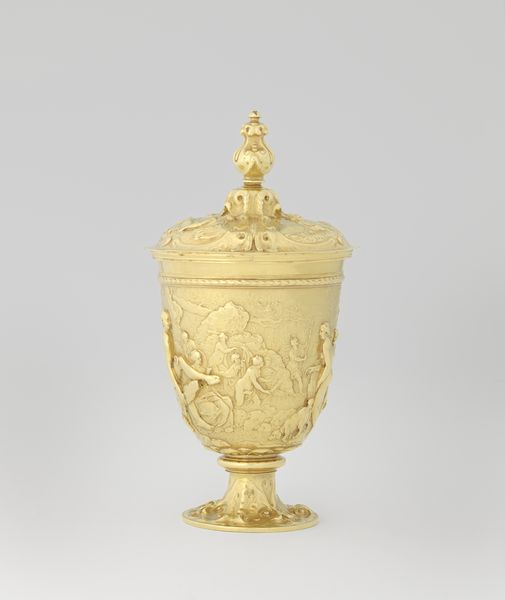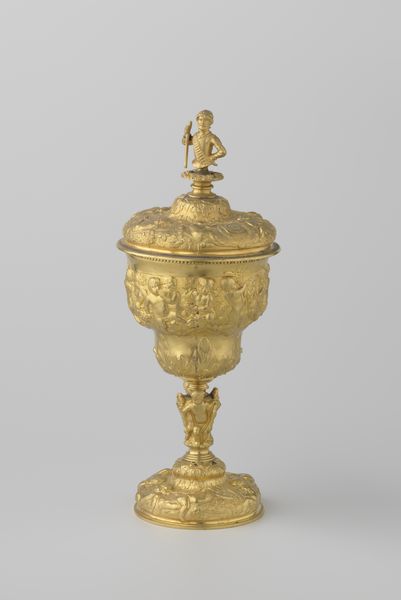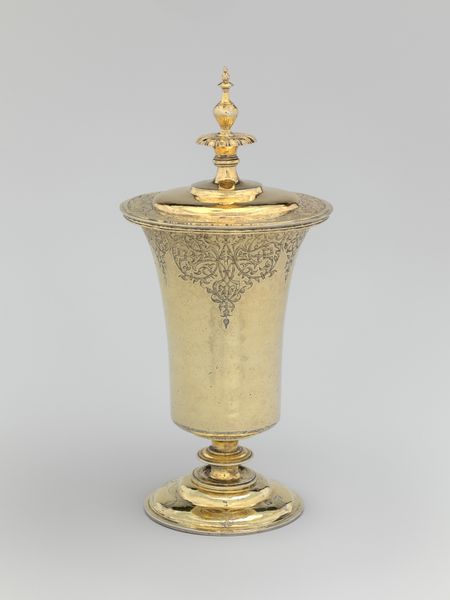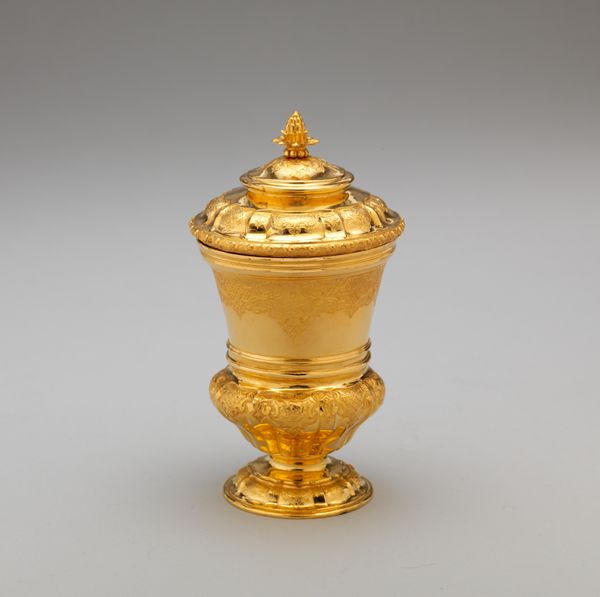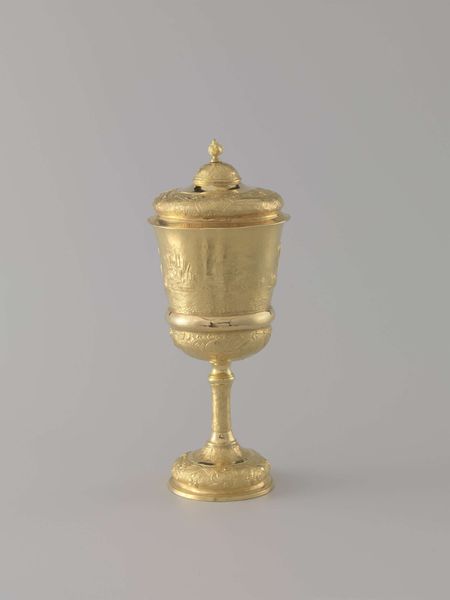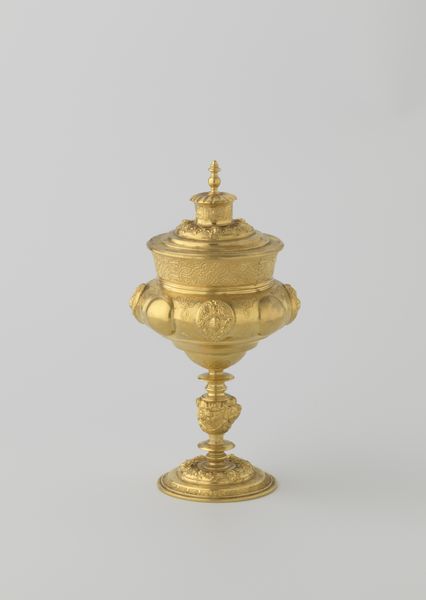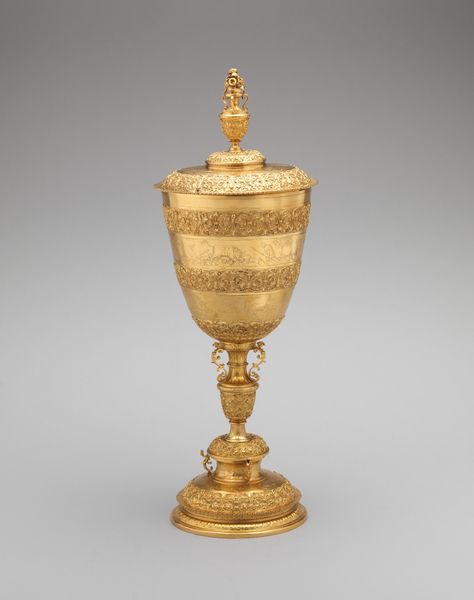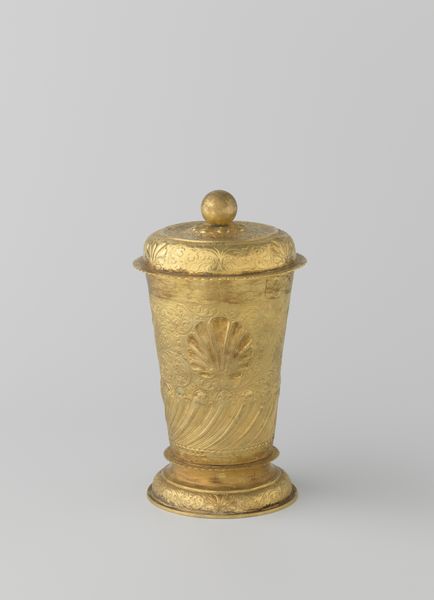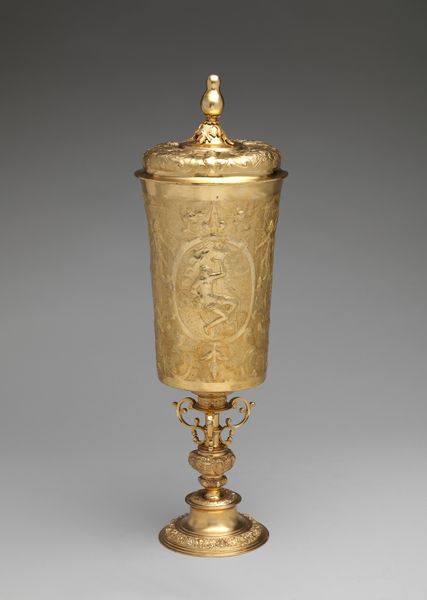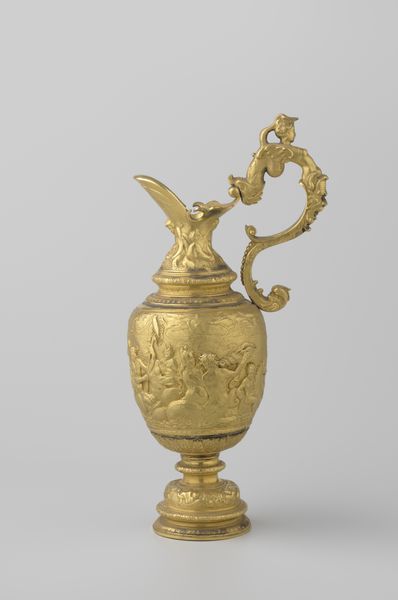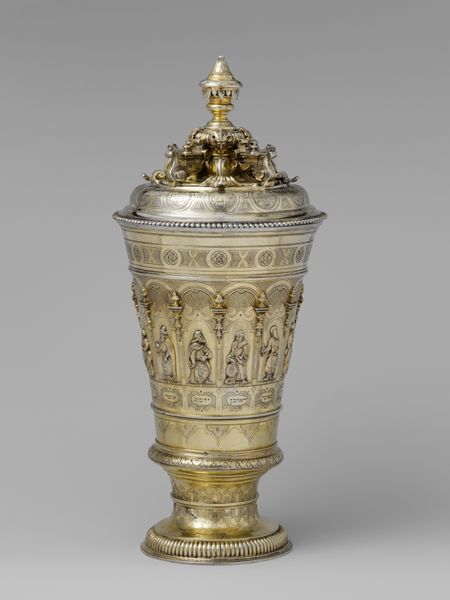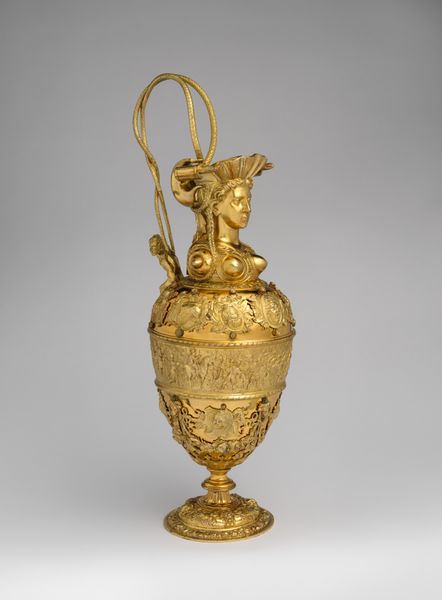
metal, relief, sculpture
#
metal
#
relief
#
landscape
#
figuration
#
sculpture
#
mythology
#
decorative-art
Dimensions: height 19 cm, diameter 12 cm, weight 643 gr
Copyright: Rijks Museum: Open Domain
Curator: The interplay of light on the golden surface immediately catches my eye. The meticulous relief work, the cup's structure, the harmony between the base and lid—it's all so visually compelling. Editor: We're looking at a piece called "Cup with Diana and Actaeon", created in 1881 by Elkington & Co. Currently it is part of the Rijksmuseum collection. Considering it, my thoughts drift toward the Victorian fascination with classical narratives. There's something inherently class-driven in the reinterpretation of myth as commodities. Curator: I would say that this gold finish achieves a very high-contrast and theatrical tableau that certainly catches the eye. Note the density and fineness of its metal work. Editor: Certainly the details within the relief are evocative, especially when we understand what the theme illustrates. This narrates the unfortunate tale of Actaeon, who accidentally saw the goddess Diana bathing, a transgression for which she transformed him into a stag before his own hunting dogs tore him apart. The artistry served as both symbol of elite taste and reinforcement of social power dynamics. Who would this vessel have been created for, and why? Curator: The production quality speaks volumes about industrial prowess. Mass manufacturing processes could now apply incredible artistic design into practical, and potentially cheap, objects for home décor and more. Did these items actually circulate widely, or was the aim more aspirational? Editor: Perhaps the limited distribution of this work created desire? Gold materials meant an appeal to upper middle-class or even elite tastes, signaling prestige through ownership and consumption. We see reflections of cultural capital but also gender dynamics; myths frequently portray women punished when viewed—the consequence of an exposed figure within the patriarchal society. Curator: Absolutely. A dense interweaving between aesthetic formalism and symbolic storytelling—a dynamic that perhaps obscures a deeper socio-economic history, if not obscured completely? Editor: It underscores how art, irrespective of its beauty or craftsmanship, remains entangled within networks of labor and consumption. These artifacts communicate not just artist’s intents, but an array of interests throughout society and within culture itself. Curator: A sobering point of perspective. Now, considering the relief's intricate designs and reflective materiality.... Editor: Yes, bringing us full circle to the complex narrative etched on its surface, and how they were ultimately circulated through broader contexts! Thank you!
Comments
rijksmuseum about 2 years ago
⋮
In this gold cup Paulus van Vianen again presents three different ways to employ kwab ornament. Compared to the tazza shown nearby, his use of auricular ornament has become bolder. The little knob on the lid is entirely made up of kwab forms. These motifs do not serve to embellish an existing form, but constitute the form (the knob) itself. This was entirely new.
Join the conversation
Join millions of artists and users on Artera today and experience the ultimate creative platform.
